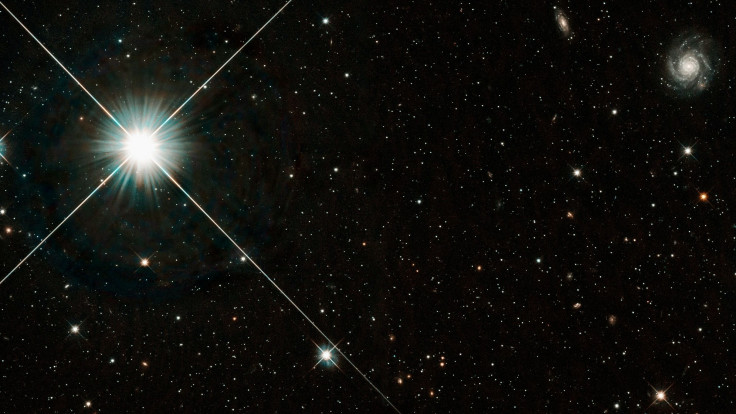3I/ATLAS: Anti-Tail and Erratic Motion Force NASA to Take Unprecedented Action
Mysterious interstellar object 3I/ATLAS forces unprecedented NASA and Harvard response.

An object from the depths of interstellar space is hurtling through our solar system, and its bizarre behaviour has sent the world's leading space agencies scrambling. The mysterious visitor, designated 3I/ATLAS, is exhibiting what scientists have called 'inexplicable' characteristics, prompting an unprecedented monitoring campaign.
Discovered in July 2025 by the NASA-funded ATLAS telescope in Chile, 3I/ATLAS is only the third interstellar object ever detected passing through our cosmic neighbourhood. It is travelling at a blistering speed of over 209,000 kilometres per hour on a path that confirms it originated from a different star system.
Why Does 3I/ATLAS Defy Scientific Explanation?
To the untrained eye, 3I/ATLAS might look like a regular comet, but astronomers know it is anything but ordinary. Its most perplexing feature is a bright 'anti-tail', a plume of dust and particles that points directly towards the Sun, defying the known physics of comets, whose tails are always pushed away by solar radiation.
Compounding the mystery is its erratic movement. The object is experiencing non-gravitational acceleration, meaning something other than the Sun's gravity is altering its course. While this can happen with comets due to uneven jets of gas, the scale of this deviation is unusual.
Furthermore, its nucleus is estimated to be a staggering five kilometres in diameter, roughly the size of Manhattan. NASA's James Webb Space Telescope also made a shocking detection: emissions of nickel without any accompanying iron, a composition never before seen in a natural comet.
Why Has NASA Triggered an Unprecedented Global Alert?
The string of anomalies led Harvard's Minor Planet Center to discreetly activate a global space safety protocol on 21 October 2025. This mobilised the International Asteroid Warning Network (IAWN), directing observatories worldwide to focus their efforts on the object until late January 2026.
An impressive array of technology, including the James Webb and Hubble space telescopes, has been tasked with tracking 3I/ATLAS. Even during a U.S. government shutdown, NASA confirmed that 'essential personnel' remain dedicated to monitoring the object due to its scientific importance.
The situation has also captured political attention. U.S. Congresswoman Anna Paulina Luna has formally requested that NASA release all its data on the visitor, stating, 'this information is of great importance to advancing our understanding of interstellar visitors'.
🚨 Avi Loeb on FOX 10 “If it’s technological, yes… we’re screwed.”
— Skywatch Signal (@UAPWatchers) November 6, 2025
Avi Loeb was on FOX 10 to discuss the latest on 3I/ATLAS, the Mars Reconnaissance Orbiter data, and what Congress is doing behind the scenes.
Loeb revealed that Rep. Anna Paulina Luna personally met with NASA… pic.twitter.com/vTppIbTMSS
Could This Be a 'Black Swan' Technological Event?
While NASA maintains that the object is 'most likely a natural comet', its peculiarities have forced experts to consider other possibilities. Harvard astrophysicist Avi Loeb has noted that the strange nickel composition has only ever been observed in human manufacturing processes.
'Its anomalies imply that we must consider a technological origin because of the large implications to humanity in that case', Loeb explained. He described 3I/ATLAS as a potential 'black swan event', a rare phenomenon with civilisation-altering potential, adding, 'it's at least a thousand times more massive than the previous interstellar objects we've seen'.
Despite the intense scrutiny, NASA has assured the public that 3I/ATLAS poses no threat, as it will pass no closer than 270 million kilometres from Earth. However, the unique event is being used as a real-world test for planetary defence, as reported by various science publications, and will undoubtedly shape space research for decades to come.
© Copyright IBTimes 2025. All rights reserved.





















